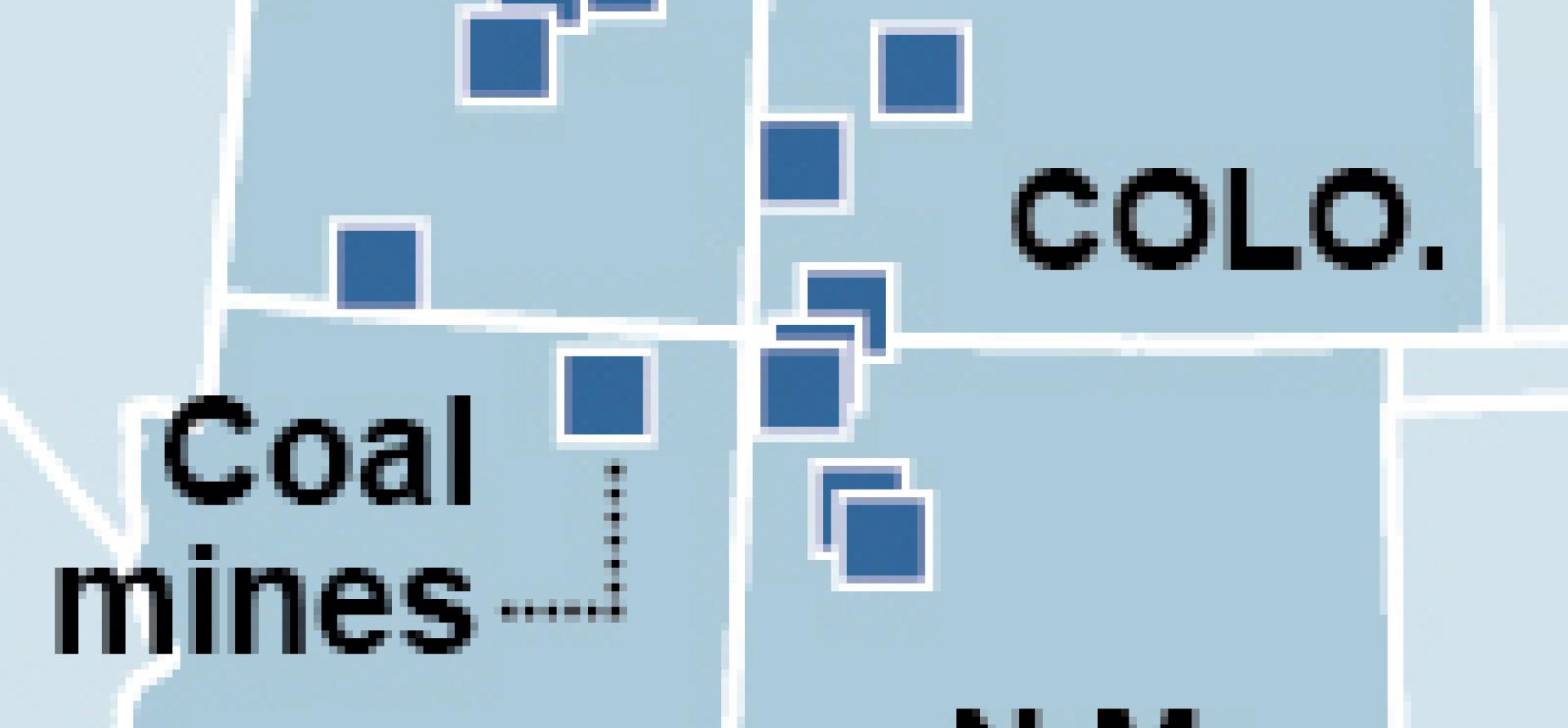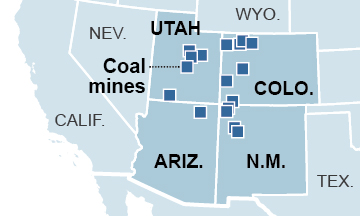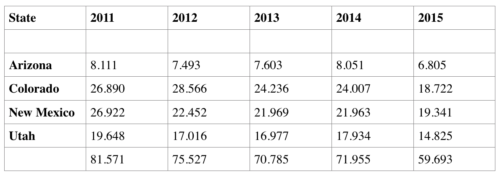Coal Industry on the Brink in Arizona, Colorado, New Mexico and Utah

 It is past time for governors and legislators in the Rocky Mountain West to seriously plan for what they are going to do to help mining communities and families hit hard by the coal industry’s collapse.
It is past time for governors and legislators in the Rocky Mountain West to seriously plan for what they are going to do to help mining communities and families hit hard by the coal industry’s collapse.
These leaders—in the six states from the Canadian border to Mexico—have been silent for too long.
The coal-mining sector today in four of those states in particular (Arizona, Colorado, New Mexico and Utah) is at particular risk of disappearing entirely, producing no coal at all—zero—in the not too distant future.
Collectively these four states produced 59 million tons of coal in 2015, a little less than 7 percent of the 896 million tons produced nationally. While that proportion is obviously a small part of the total U.S. coal-mining industry, it has been a cornerstone of local economies in those states for generations.
Table: Selected Western States Coal Production 2011-2015 (in million tons)
Red flags are everywhere.
- In New Mexico, Peabody Energy is locked in a costly dispute with owners of the Cholla Power Plant in Arizona who are looking to terminate their contracts with Peabody, whose Lee Ranch and El Segundo mines are fully dependent on the plant. Neither has any market other than the Cholla plant, and the financial vulnerabilities of both are well known (see “Peabody’s Recent Asset-Sale Maneuvers Alone Won’t Work”). When Peabody tried to include these mines as part of a sales deal late last year to Bowie Resources, Bowie was unable to find financing (this aborted transaction is also a matter of litigation now). Peabody in the meantime has announced layoffs at Lee Ranch and El Segundo, and Westmoreland Coal has done likewise at its San Juan Mine holding.
- In Arizona, Peabody tried last year to use its Kayenta Mine as collateral for a debt-refinancing strategy. That move went nowhere.
- In Utah, Bob Murray, an owner of Utah mining properties and an outspoken coal-industry CEO, sees the total elimination of Utah coal production by 2030. Murray has also offered a clear and forceful criticism of coal producers who continue to pursue the development of coal-export terminals off the West Coast. “Smoking opium,” he says of these promoters. Murray sees West Coast coal exports dwindling, if anything, to a trickle for the foreseeable future, and we stated in March that Arch’s abandonment of its Otter Creek project in Montana says it all (see “Dream of a Coal Export Boom Is Dead”). Production losses in Utah are likely to continue over the next several years. Bowie, which has invested heavily in Utah, has been downgraded recently by Standard and Poor’s to CCC+ in a change that highlights liquidity concerns and a declining market.
- In Colorado, the Bowie-Peabody deal was to have included the sale of the Twentymile property. This part of the transaction failed alongside the New Mexico deal. Arch Coal, meanwhile, has recently laid off workers at its West Elk property. SNL Energy’s recent survey of the Uinta Basin (Colorado and Utah) shows only one mine in the entire region increasing production during the the first quarter of 2016 when compared to the first quarter of 2015
SIGNIFICANT CHANGES ARE AFOOT, TOO, IN THE POWDER RIVER BASIN OF MONTANA AND WYOMING, where production numbers were down dramatically in the first quarter of this year. A host of 8400 Btu mines (Cordero, Eagle Butte, Belle Ayr, Caballo and Rawhide) saw an aggregate 43 percent drop in production in the first quarter of this year compared to last year. These losses drove an overall decline in the region of 34 percent from the first quarter of last year.
We note also that efforts by Alpha Natural Resources to market the Belle Ayr and Eagle Butte properties in its bankruptcy proceeding produced no indication that these properties held any appreciable value over its other properties. Alpha has accepted a very modest stalking-horse bid for all of its properties.
The business plans for Peabody and Arch are worth watching as the bankruptcy process moves toward a revaluation of the largest mines in the Powder River Basin. How much are these mines worth? How much economically recoverable coal exists? How does Arch go from negative margins when per-ton costs remain high and contract pricing is doing down? Which mines selling coal to what plants are going to allow them to make a viable claim as a going concern? What are the assumptions about where pricing is going on coal in the Powder River Basin and Appalachia and are they realistic? Is Arch correct in asserting that it can sustain about $1 billion in ongoing debt? Who will lend them the money?
While declines in coal production in the Powder River Basin will likely result in some mine shutdowns, the region will remain an important source of the nation’s coal supply. Mine operations in other states will probably not fare as well. With planned (and unplanned) plant retirements still to come in the West, in the Southwest and in the Midwest, the mines in those places are particularly vulnerable.
The U.S. Energy Information Administration in its most current Short-Term Energy Outlook sees continued weakness in the western coal region through 2017, yet no governor in any coal-producing state is taking the reins and moving forward with a program of action to address these declines.
Instead, we watch Utah appropriate $53 million for a coal-export terminal in Oakland for which there is no market (see “If Utah Commits to Proposed $53 Million Oakland Port Subsidy, It’s Buying a Pig in a Poke”). We watch New Mexico grant Peabody continued self-bonding status as the company goes bankrupt (see “N.M. taxpayers at Risk in Peabody-Bowie Coal Deal”). It is one thing to fight for an ailing hometown industry, it is another to continue to invest in a sinking ship.
All of these states have economic activities and possibilities that go beyond coal, yet governors and legislatures across the West turn a largely blind eye to the future.
Where is the support for workers who will be displaced from the mines? Where are the strategies to find new investment to bring in new businesses and to build on non-mining industries that already exists? Where are the plans to stabilize the declining coal industry itself and make sure remaining jobs are secure? Where are the fiscal remedies to cash-strapped communities faced with the loss of the mines? Where is the leadership to transcend the worn-out federal-state relationship on nationally owned coal resources and forge a new chapter on how those resources are managed responsibly?
Tom Sanzillo is IEEFA’s director of finance.
Related posts:
The Federal Government’s Coal-Leasing Program Is Broken: Here’s How to Fix It
















